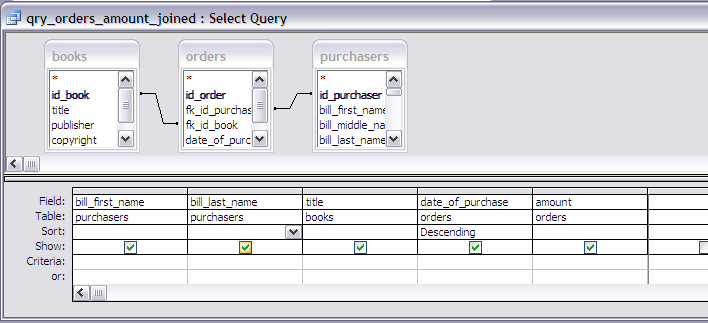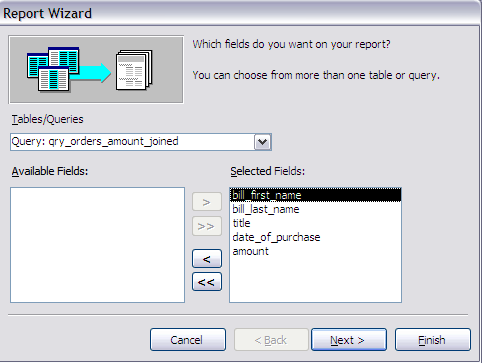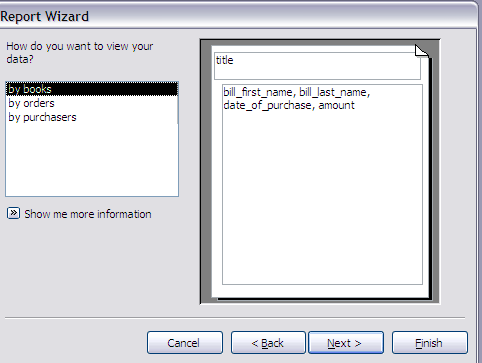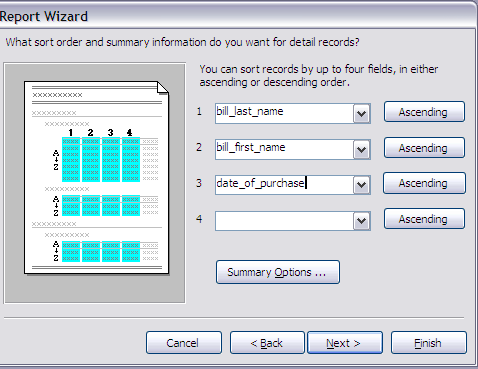| Some Background.
We just went through developing a report based on the purchasers and
what they've bought and spent. Now we want to get a report that
organizes the information around the books. We want to display what
books are being bought and how much has been spent on each.
But we also want to display some basic information about the
purchasers. Again you may choose to download the database that I have already been working on. If you want to duplicate my steps you can do it in this database or one of your own creation. But you are going to want to name your QUERIES and REPORTS slightly differently than the names I've used so you do not overwrite those that already exist. But all the other names should match as exactly as you can. Or you can work in a copy of madam_curry.mdb. The first step is to open the database and select the queries. Generally, I choose to first develop a query to base a report on. The report design wizard can often create the underlying query without you doing it or creating an underlying query at all. But creating an underlying query has its advantages. You will be able to sue the same query we used in the last report called qry_orders_amount_joined. We are going to work in Query Design View so that you should see something like the following pulling the query up in design view. |





